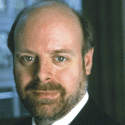 Scholars of evolution describe a phenomenon known as “the peacock effect.” The typically rational process of natural selection can sometimes become a runaway train. Peahens for millennia preferred males with showy, prodigious tails, because that trait was correlated with robust health and, hence, the capability to provide for the family. Problem is, as females prized that characteristic so much for so long, the males became the equivalent of muscle-bound, their tails so big and heavy that they became easy prey. Essentially, the fittest became the fattest.
Scholars of evolution describe a phenomenon known as “the peacock effect.” The typically rational process of natural selection can sometimes become a runaway train. Peahens for millennia preferred males with showy, prodigious tails, because that trait was correlated with robust health and, hence, the capability to provide for the family. Problem is, as females prized that characteristic so much for so long, the males became the equivalent of muscle-bound, their tails so big and heavy that they became easy prey. Essentially, the fittest became the fattest.
The broader lesson is that choices based on derivative traits (a tail being a symbol for health, rather than the thing itself) can become inefficient. Proxy overcomes purpose. This dynamic is expertly captured in Steven Kerr’s classic article “On the Folly of Rewarding A While Hoping for B” in the Academy of Management Executive. That rare academic who also held a real top management position for a major corporation (General Electric then, Goldman Sachs now), Kerr analyzed such disconnections in everything from politics to war to healthcare.
“The American citizenry,” wrote Kerr, “supposedly wants its candidates for public office to set forth operative goals, making their proposed programs clear, and specifying sources and uses of funds.”
In reality, of course, such specificity engenders opposition from some percentage of the electorate. Voters want more than they’re willing to pay for. We ask our candidates to campaign in poetry, because we don’t genuinely want to deal with the prose of governance.
The result? Natural election: Political peacocks with heavy tails.
Or consider the difference between the reward systems at operation in World War II versus Vietnam. In both, soldiers on the frontline rationally feared death and were motivated to get home. But in the former, many internalized the notion that they could go home when the war was “won,” whereas the latter wanted to repatriate when their tour was “done.” The latter war reflected an evolution of foreign policy and military doctrine that had gone rogue. The brass, in this analogy, were the misguided peahens, displacing the necessary GI inspiration with inertial invocations of patriotism and obedience. The soliders who were the products of this process became easier prey.
As for healthcare, the fee for service system has arguably deteriorated into a heavy tail. Rewarded for process rather than outcome—and motivated by an exaggerated, even paranoid fear of malpractice litigation—many doctors prescribe too much and test too much. That’s the main reason that healthcare costs have outstripped inflation for decades. Faith in medical procedure has become a proxy that doesn’t track efficiently with the real goal: health.
Workforce leaders charged with designing compensation systems know all this from personal experience. Bonus schedules and reward regimes often diverge from the organization’s true mission and mandate. Perhaps the corporate trait of profit pursuit has become too prized by the C-suite’s natural selectors.
Margins matter, of course. Without healthy profits, organizations would not survive to propagate. But wrongheaded pursuit of the almighty dollar becomes a heavy tail. A vestige of the industrial revolution, the obsession with fiscal micromanagement and productivity maximization often displaces more sustainable systems of motivation and reward. Hence, the emerging crossover of human resources with corporate responsibility. It is now easy to imagine a corporate leadership structure with bonuses tied to their workforce’s health and happiness, as closely as they are tied to quarterly earnings.
To effect this transformation, leaders need to change corporate cravings. Easier said than done. But for one clue into controlling behavioral evolution, think toothpaste—specifically, Pepsodent. As described in The Power of Habit, a brilliant new book by Charles Duhigg of The New York Times, legendary ad man Claude Hopkins almost single-handedly altered the nation’s dental hygiene.
Approached by Pepsodent in the early 1900s to help expand its market, Hopkins at first demurred. After all, at that point only 7 percent of Americans had a tube of toothpaste in their medicine chests. (Uh, yikes.) Yet within a decade, that number had risen to 65 percent. How? Reading the dental literature, Hopkins learned about what was then called “tooth film.” By mounting a publicity campaign villifying “film” as an impediment to attractiveness, Hopkins had soon persuaded millions to adopt a new daily ritual. It made him rich. And it made the country healthier.
Workforce leaders should ask themselves what needs changing in their own organizations. That’s the first step to stopping the tail from wagging the peacock.
–Dirk Olin










